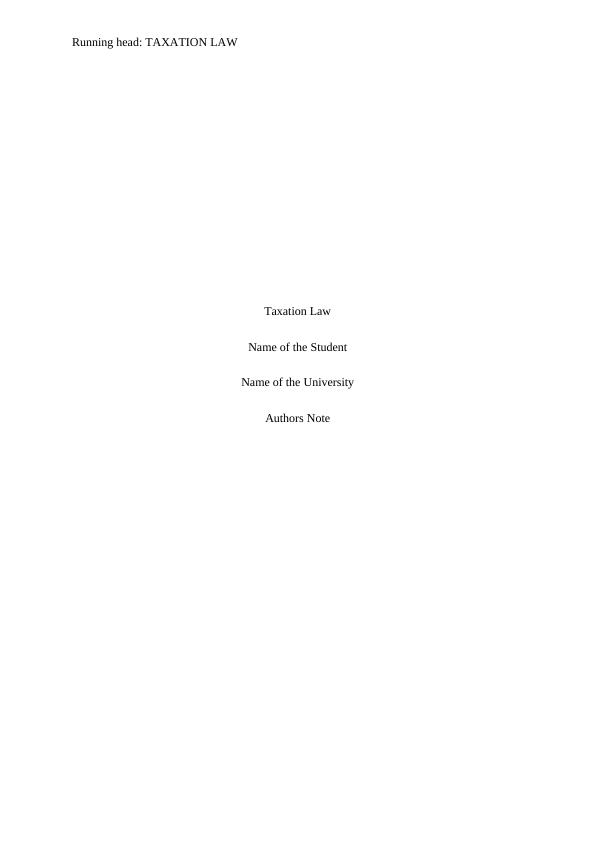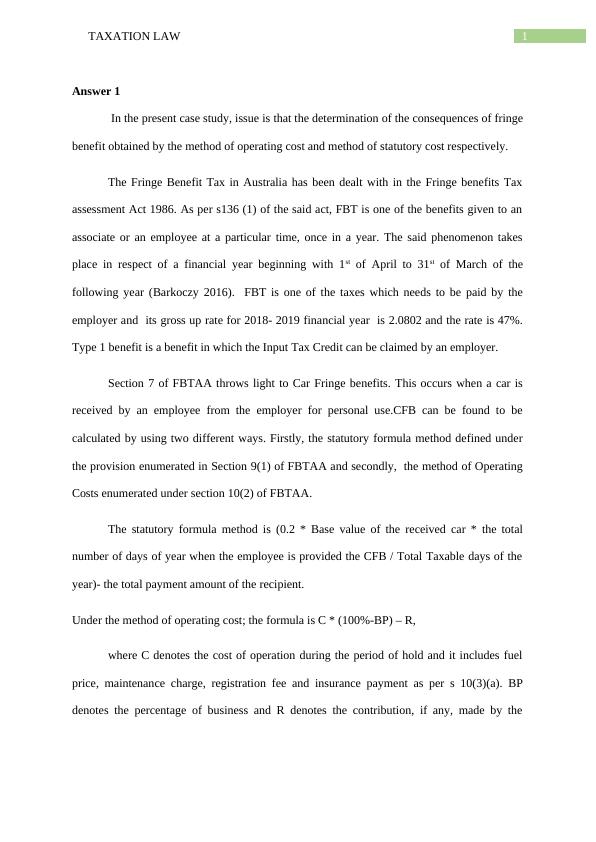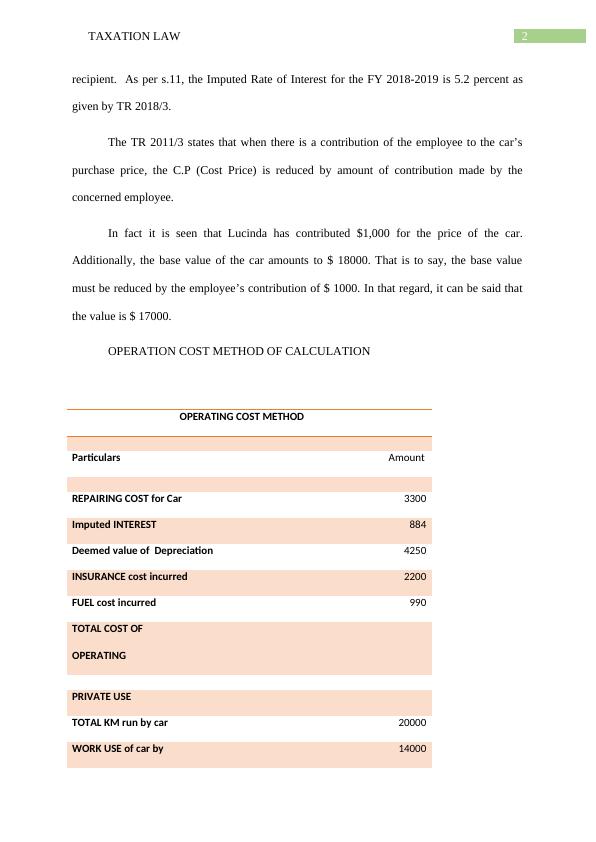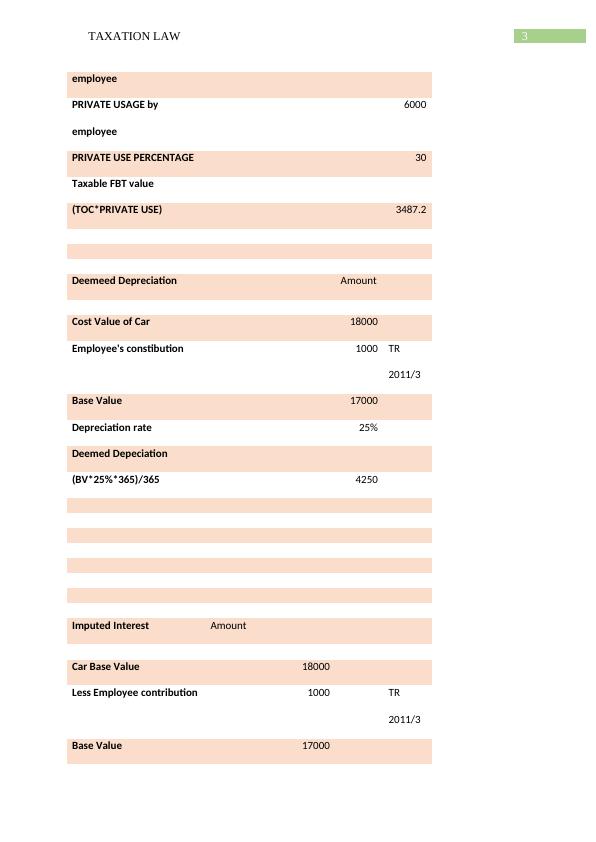Consequences of Fringe Benefit Calculation Methods in Taxation Law
Students are required to follow the instructions by your lecturer to confirm any relevant information. You also need to follow any relevant announcement on Blackboard to confirm the due date and time of the assignment.
11 Pages2302 Words227 Views
Added on 2023-03-30
About This Document
This article discusses the consequences of using different methods to calculate fringe benefits in taxation law. It explores the statutory formula method and the method of operating costs, providing a detailed explanation of each method and their implications. The article also includes examples and calculations to illustrate the application of these methods. Overall, it provides a comprehensive understanding of fringe benefit calculation methods in taxation law.
Consequences of Fringe Benefit Calculation Methods in Taxation Law
Students are required to follow the instructions by your lecturer to confirm any relevant information. You also need to follow any relevant announcement on Blackboard to confirm the due date and time of the assignment.
Added on 2023-03-30
ShareRelated Documents
End of preview
Want to access all the pages? Upload your documents or become a member.
Taxation Law: Fringe Benefit Consequences and Capital Gain Consequences
|8
|1990
|62
Taxation Law: Fringe Benefit Tax and Capital Gains Analysis
|11
|2516
|278
Taxation Law: Fringe Benefit Tax and Capital Gains Consequences
|11
|2273
|293
Taxation Law: Fringe Benefit Consequences of Car and CG Consequences for Asset Selling
|11
|2565
|126
Taxation Law: FBT Implications and CGT Consequences
|13
|2376
|336
Taxation Law
|10
|2051
|167




